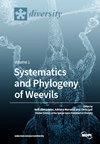Luansa河(上刚果盆地)两种甲壳类新种(淋病形:甲壳科):综合分类揭示的隐藏多样性
IF 2.1
3区 生物学
Q2 BIODIVERSITY CONSERVATION
引用次数: 1
摘要
基于形态学和COI条形码证据的综合方法,在Bangweulu-Mweru生态区Luapula下游左岸支流Luansa河中描述了两个新的Kneria物种K. luansaensis sp. nov和K. maxi sp. nov。栾山桫椤主要分布在栾山山源下游至三石佛洛大瀑布最后一个瀑布的上游,而大桫椤只分布在这三个大瀑布的下游。在Kneria,雄性≥33 mm LS有一个眼周和眼周后器官。后者的片层数量似乎包含一些α分类信息,尽管这需要进一步研究,因为异速生长变化发生在≤45 mm LS处。其他的外部形态特征在两性之间也存在差异,即(i)胸鳍宽度(雄性比雌性宽),(ii)背鳍高度(雄性比雌性长),(iii)下尾鳍最长线的长度(雄性比雌性长)。农业、使用鱼毒素的捕捞和伐木是对罗安萨和这两个新物种最紧迫的威胁。它们是在昆德隆古高原的一条河流及其周边地区发现的,该地区位于昆德隆古国家公园目前的边界之外,这突显了对这一淡水关键生物多样性地区制定完善和改进保护策略的必要性。本文章由计算机程序翻译,如有差异,请以英文原文为准。
Two New Shellear Species (Gonorhynchiformes: Kneriidae), from the Luansa River (Upper Congo Basin): Hidden Diversity Revealed by Integrative Taxonomy
Two new Kneria species, K. luansaensis sp. nov. and K. maxi sp. nov., are described from the Luansa River, a left bank tributary of the lower Luapula in the Bangweulu–Mweru ecoregion, based on an integrative approach using morphological and COI barcoding evidence. While K. luansaensis sp. nov. occurs from the source of the Luansa further downstream to above the last of the three Sanshifolo Falls, K. maxi sp. nov. only occurs downstream of all these three major falls. In Kneria, males of about ≥ 33 mm LS have an opercular and a postopercular organ. The number of lamellae on the latter seems to contain some alpha-taxonomic information, although this requires further study as allometric changes occur at about ≤ 45 mm LS. Additional external morphological characters differ between sexes, i.e., the (i) pectoral fin width (wider in males than females), (ii) dorsal fin height (longer in males than females), and (iii) length of the longest ray of the lower caudal fin lobe (longer in males than females). Agriculture, fishing with ichthyotoxines, and logging are the most pressing threats on the Luansa and thus to both the new species. Their discovery in one of the rivers of the Kundelungu Plateau and its surroundings located outside the present-day boundaries of the Kundelungu National Park highlights the need for a refined and improved protection strategy for this freshwater key biodiversity area.
求助全文
通过发布文献求助,成功后即可免费获取论文全文。
去求助
来源期刊

Diversity-Basel
Environmental Science-Ecological Modeling
CiteScore
3.40
自引率
12.50%
发文量
925
审稿时长
11 weeks
期刊介绍:
Diversity (ISSN 1424-2818) is an international and interdisciplinary journal of science concerning diversity concept and application, diversity assessment and diversity preservation. It is focused on organismic and molecular diversity. It publishes reviews, regular research papers and short notes in the regular issues. Related news and announcements are also published. Our aim is to encourage scientists to publish their experimental and theoretical results in as much detail as possible. Therefore, there is no restriction on the length of the papers. Full experimental details must be provided so that the results can be reproduced.
 求助内容:
求助内容: 应助结果提醒方式:
应助结果提醒方式:


